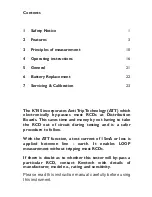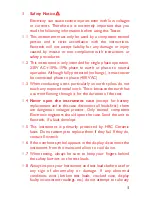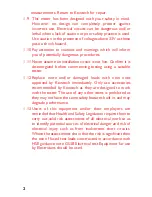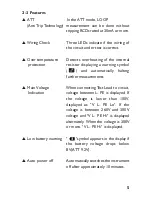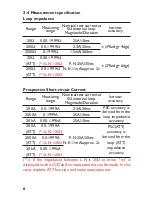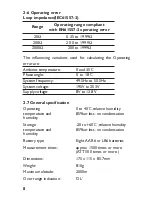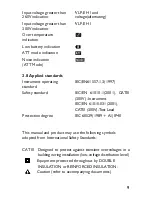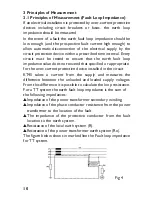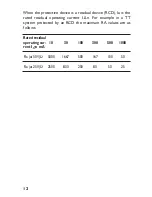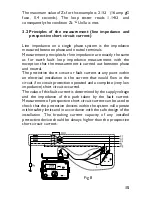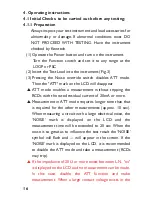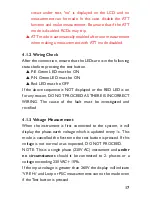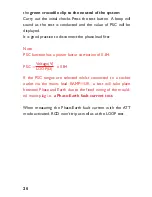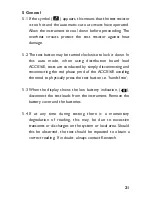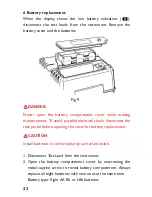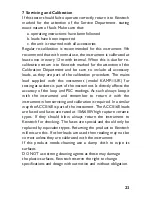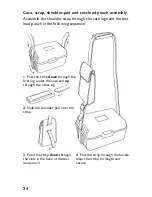
10
3 Principles of Measurement
3.1 Principles of Measurement (Fault Loop Impedance)
If an electrical installation is protected by over-current protective
devices including circuit breakers or fuses, the earth loop
impedance should be measured.
In the event of a fault the earth fault loop impedance should be
low enough (and the prospective fault current high enough) to
allow automatic disconnection of the electrical supply by the
circuit protection device within a prescribed time interval. Every
circuit must be tested to ensure that the earth fault loop
impedance value does not exceed that specified or appropriate
for the over-current protective device installed in the circuit.
KT45 takes a current from the supply and measures the
difference between the unloaded and loaded supply voltages.
From this difference it is possible to calculate the loop resistance.
For a TT system the earth fault loop impedance is the sum of
the following impedances;
▲
Impedance of the power transformer secondary winding.
▲
Impedance of the phase conductor resistance from the power
transformer to the location of the fault.
▲
The impedance of the protective conductor from the fault
location to the earth system.
▲
Resistance of the local earth system (R).
▲
Resistance of the power transformer earth system (Ro).
The figure below shows in marked line the Fault loop impedance
for TT system.
Fig 4


